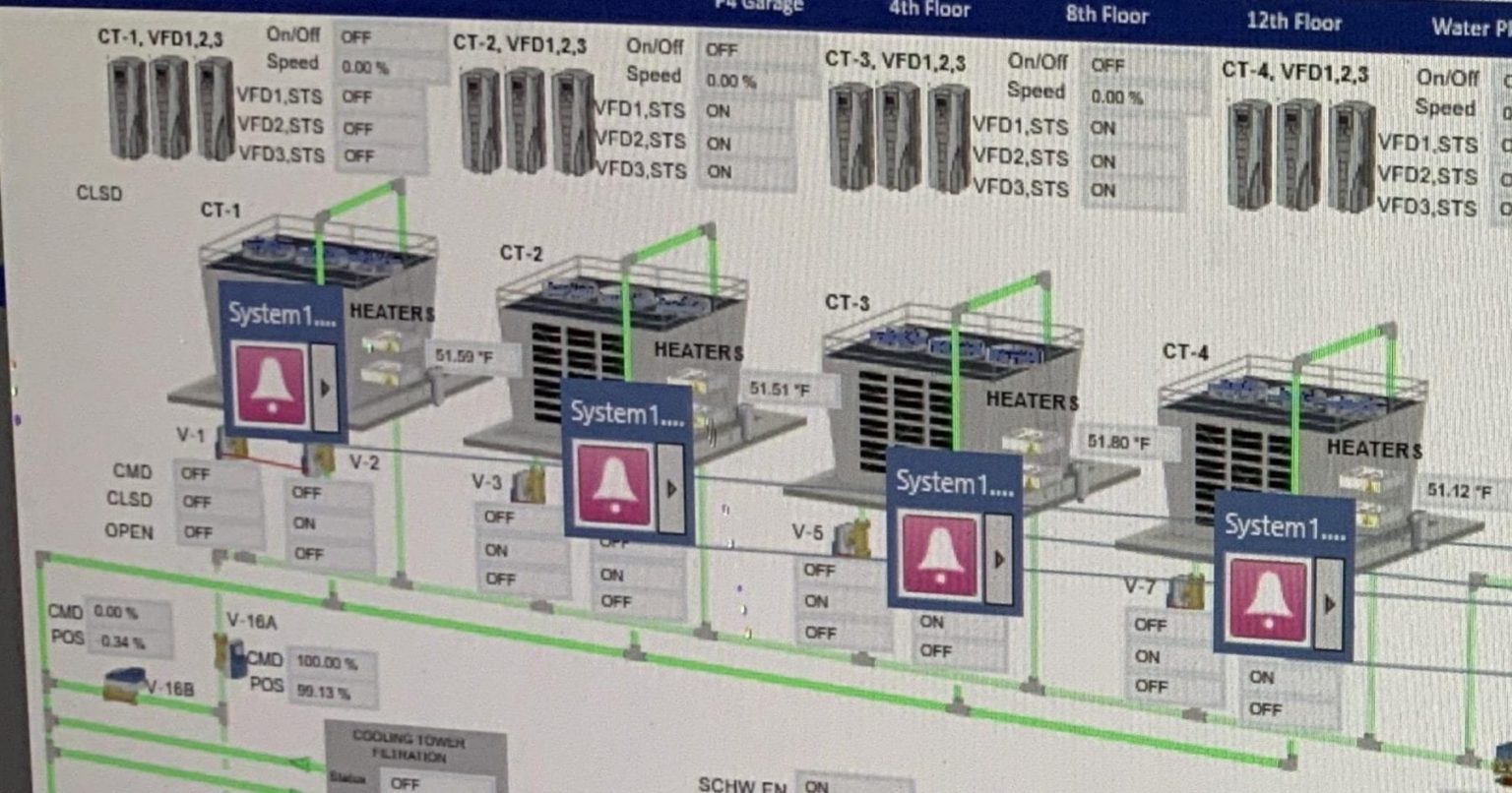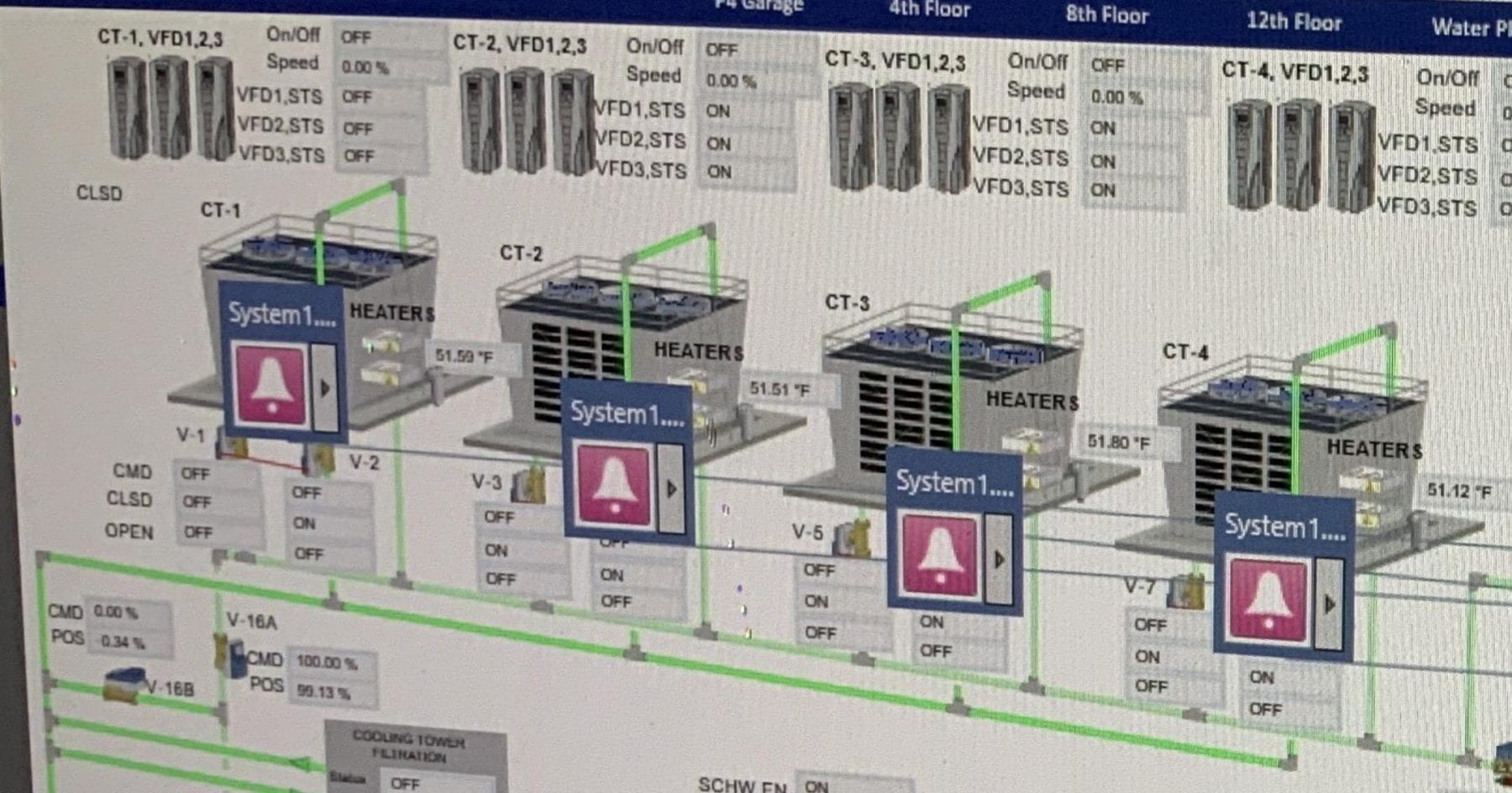
“The show must go on” is a common saying when something unexpected happens the night of a concert, minutes before a play, or when tenants are going to occupy the floors in the next few weeks. Construction was deemed an essential business in Washington D.C., and the show is going on at job sites across the city. Masks, one-way staircases, and staggered shifts have all helped reduce the risk of transmission between builders, but the risk still persists. As commissioning providers on many job sites, we could be a vector for spreading COVID-19 as we travel between sites. However, Baumann transitioned to remote functional testing to limit on-site presence to keep our employees safe while still providing quality assurance to owners prior to move-in. We do this safely and effectively by utilizing web-based commissioning platform CxAlloy, clear communication, and remote viewing technology to deliver projects without disruption during the pandemic.
Although the process of remote functional testing is different, the prerequisites for in-person testing are largely the same. To really lean in on the theater metaphor, functional tests are not a rehearsal, they are “showtime.” That means we have startup sheets, air, and water balancing reports, and controls point-to-point verification on each piece of equipment prior to testing. We use CxAlloy to organize these documents for each piece of equipment, so we know which units and systems are ready for testing and to provide organized documentation in our commissioning report. This gives us confidence that the installed work is complete and ready to run the same way it would on move-in day for the owners.
Similarly, our specifications require mechanical and control contractors to run through our test scripts without our involvement before we run our tests. This is to verify the submitted sequence of operation is what is programmed in the field. Even small discrepancies in the sequence can derail system-level commissioning, so it is essential to make sure the sequences are correct in order for testing to run smoothly. Constant communication is key in construction, so regular conversations with the contractors have proved invaluable in clearing up sequencing questions and ambiguities not foreseen during the design phase.
The simplest pre-requisite for remote functional testing is sometimes the most daunting, and that is an internet connection for the BAS front-end computer. On many projects, fiber optic/internet is one of the last steps before substantial completion, however, it is essential for effective remote testing. We need the internet connection so we can use remote-viewing software to watch the BMS front-end change in real time as we run through our test scripts. We do this with a mechanical contractor in the field so we can check three things:
- That the sequence is programmed on the basis of design and contract documents
- That the equipment responds in accordance with controls inputs and outputs
- That the graphic accurately reflects field conditions
Once we have remote access, we first examine the controls graphic to make sure it has all the relevant information the operator would need, such as schedule, discharge temperatures, and on/off status of pieces of equipment. Then, we run through the sequence of operations based on our test scripts. As the controlling contractor puts the equipment through its paces, we observe and make sure the graphics adjust accordingly. We can see each pump turn on or off, flow animations trigger plant diagrams, and heating coils turn red in real time to ensure everything that the building engineer will see will be clear and concise. Since the graphics only tell half of the story, we then confirm that what we see on the graphic matches what the mechanical subcontractor sees in the field. We confirm discharge air temperatures, valve positions, and damper function in the field to make sure the commands sent to the controllers engage with the equipment in the field. This clear line of communication leads to repeatable and dependable results, just as if we were commissioning in person on-site.

Despite the uncertainties that come with the pandemic, remote functional testing for commissioning enables us to “keep the show going ” and maintain the schedule to allow for owner turnover, LEED submission, and quality assurance prior to owner move-in. With commissioning already on the schedule for LEED projects, it is very easy to work backward with contractors to make sure all milestones are met on the path toward remote commissioning. This fast turnover process allows building engineers to take over their equipment on time, and due to our experience looking at the control systems, we can answer any questions they have in tandem with the controlling contractor. Building engineers can also join the testing process virtually so they can see their systems switch in real-time and ask operations questions directly to the contractors as a sort of pre-turnover rehearsal before the programmers move on to the next project. Having engineers present during testing also allows us to close out commissioning issues that required their approval, such as scheduling, setpoints, and the addition/removal of alarm points that they may find to be useful or a nuisance. These kinds of questions would come to light during the warranty period but bringing them up and resolving them prior to substantial completion helps the day-one operations run much more smoothly before “showtime” when the owner moves in.
Remote functional testing for commissioning has been a new experience for everyone on the construction team, but everyone’s flexibility and our commitment to quality and small size have allowed us to adapt quickly and deliver the quality service that sets Baumann apart.








